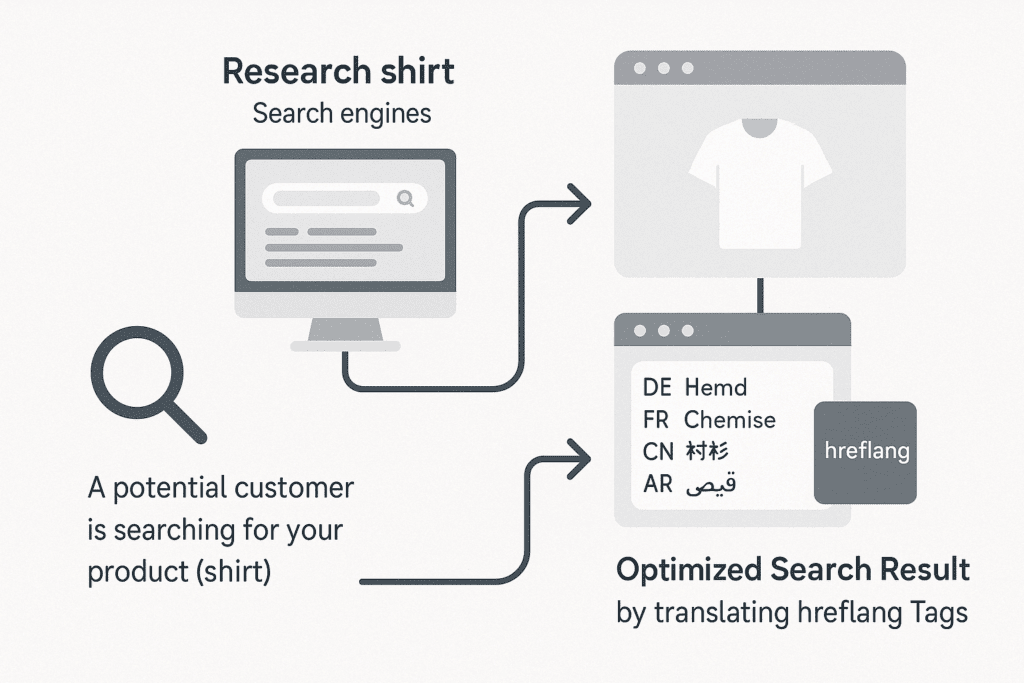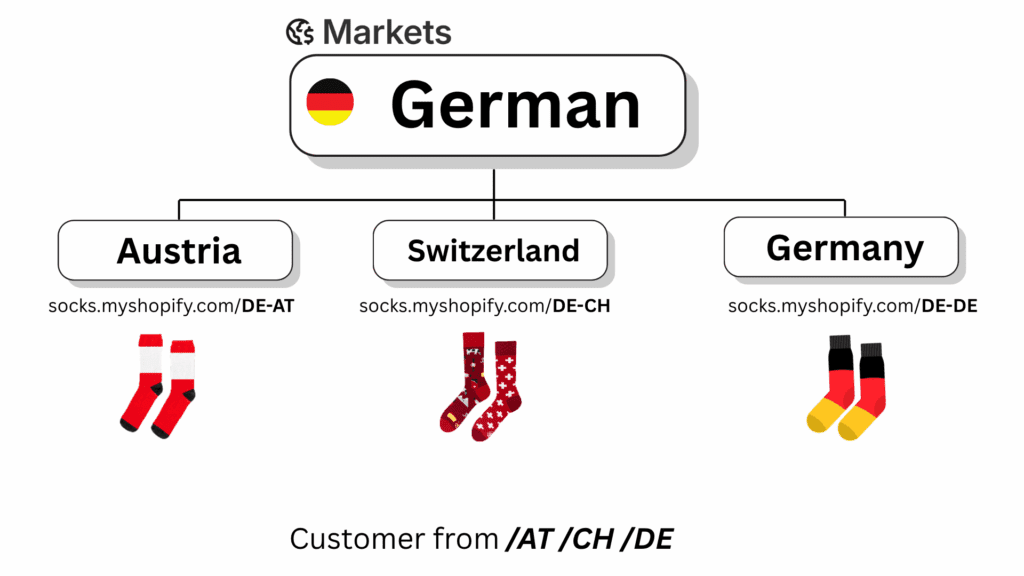Beyond Borders: How langify Supercharges Shopify’s New Markets Features
Expanding your online store internationally is exciting but complex. Shopify Edition Summer ’25 introduced powerful new updates to Shopify Markets to simplify global selling. But while Markets sets the foundation for international commerce, it doesn’t solve the most important challenge of all: speaking your customers’ language.
That’s where langify comes in. In this article, we explain why langify remains essential for merchants using Shopify Markets to the best and how it helps you truly connect with local audiences worldwide.
What’s New in Shopify Markets?
Shopify Markets has taken big steps forward in Summer ’25, offering merchants advanced international selling capabilities:
- Transparent tax and duty calculation through Managed Markets
- Clear regional sales restrictions directly manageable in the admin
- Enhanced B2B Support: Even on non-Plus plans, you can now create separate B2B Markets, each with custom catalogs, currencies, and themes.
- Support for multiple Shopify Payments accounts per region (Plus only)
- Ability to add multiple catalogs to a store

Country-Independent hreflang Tags
One of the most requested updates, country-independent hreflang tags allow your store to signal the correct language version to search engines without tying it to a specific country. This flexibility improves SEO and helps reach multilingual audiences where language and location don’t always align.
Advanced Market Management with Parent/Child Structure

The new parent/child market system makes managing complex setups easier. For example, you can create a main EU market as a parent, a GSA market (Germany, Austria, Switzerland) as a child, and then individual country markets below that. This lets you control pricing, content, shipping, and taxes with fine detail at each level, making scaling and localization more efficient.
Together, these features strengthen Shopify’s global commerce foundation and simplify cross-border selling.
Behind the Scenes: What’s Changing in Shopify Admin
Redesigned Admin Interface
Shopify’s new graph view gives merchants a clear, visual way to manage complex market relationships—between parent markets, child markets, and sub-regions. This makes it easier to keep track of how your store is structured across different regions.
The new “View as” mode is also a major upgrade: it allows you to preview your store exactly as your customers in each market will see it — with the right language, pricing, and product availability. This makes testing and optimizing your localization much faster and more accurate.
API & App Updates
Behind the scenes, Shopify’s new Markets framework runs on API version 2025‑04+. All Shopify stores will be upgraded by July 1, 2025.
How are Languages Applied to Markets
In Shopify, each Market represents a country or region you want to sell in—and language plays a key role in creating a localized experience. For every market you set up, you can choose which languages to offer and assign specific domains or subdomains to match that region.
When a customer visits your store, Shopify uses their location or the domain they’ve landed on to decide which language to show. For example, a French customer visiting yourstore.fr might automatically see the site in French, while a Canadian shopper at ca.yourstore.com can view content in either English or French, depending on their browser settings.
With a translation app like langify, managing this becomes even smoother. langify ensures all the right content—product details, pages, SEO metadata, and more—is accurately translated and displayed based on the customer’s market and language. It also integrates with Shopify’s Markets and domain settings, so the experience feels seamless and personalized.
In short, Shopify Markets sets the region, domains point customers to the right version of your store, and your language settings—powered by langify—make sure every visitor feels at home.
It’s more than Markets
While Shopify Markets creates the technical structure for global sales—connecting languages to URLs with hreflang tags and organizing markets hierarchically—it does not translate or localize your content.
Markets ensure search engines can index the right version of your store for each user, but your customers still need content that feels native and relevant to their culture and language.
This is why localization tools like langify remain crucial. langify helps your store’s content truly resonate with local customers by providing:
- Context-aware, manual or integrated translations
- SEO-friendly language versions with clean URLs, metadata, and hreflang support
- Theme-independent integration that works with any store setup
- Granular customization by language and market — no “one-size-fits-all”
Simply put, Shopify Markets builds the where and how of selling globally, while langify perfects the what—the language and messaging your customers actually see.
How langify Adds Value to Shopify Stores
Using langify alongside Shopify Markets means you get the best of both worlds:
- Manual and machine translation control: Translate content with precision, ensuring cultural accuracy and brand consistency.
- SEO-optimized multilingual sites: Clean URLs, properly implemented hreflang tags, and metadata enhance search visibility worldwide.
- Seamless integration: Works with your existing Shopify theme without conflicts or heavy customization.
Shopify Markets handles the technical setup for global selling, markets, currencies, payments, and SEO structure. But it doesn’t translate your content. That’s where langify comes in: delivering accurate, SEO-friendly translations that help you truly connect with customers in every market.
Unlocking Global Growth with Shopify Markets and langify
Shopify Markets lays a scalable foundation for international selling. But to truly win customers globally, you need real translations powered by langify.
For example, a store targeting Europe can set up Markets to handle regional pricing and shipping while using langify to translate content into German, French, Spanish, and more, each tailored to local preferences and search behavior.
For langify customers, that means more opportunities, better results, and — with correctly implemented hreflang tags — the right translated page served to the right audience.
To succeed globally, you need both:
- A scalable platform (Shopify Markets)
- And real localization (langify)
Now is the perfect time to bring both together.
Built for Real-World Use Cases
Whether you’re using Shopify’s native themes, custom storefronts, or third-party integrations, langify ensures your translations appear where they should, without breaking functionality.
Bonus: Real Example
Merchants like Jamie Jacobs have successfully leveraged langify alongside Shopify Markets to unlock new global customers and increase sales.
Curious how to combine langify with Shopify’s new international features?
We’re happy to help—let’s talk!

“Business is the profession. Harmony the passion.”
Connecting people and customers is the key. In e-commerce & general. Tones & Music are a wonderful communication tool. Only 7 tones define it and are understood all around the world
